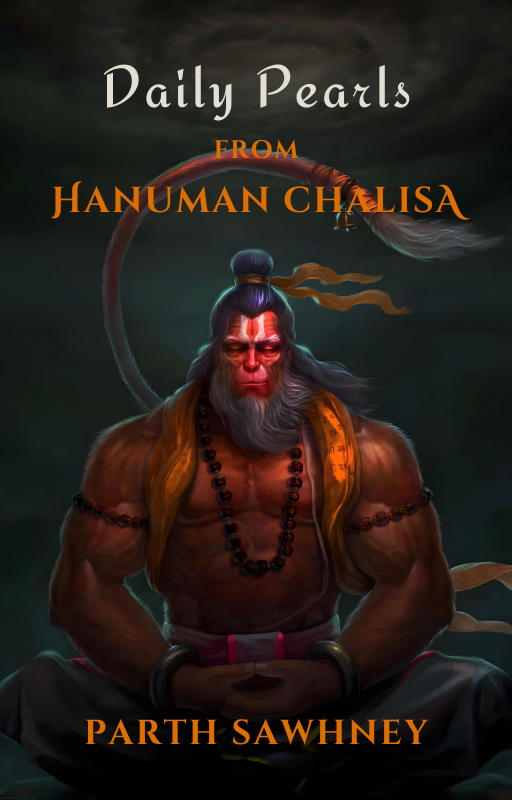“Daily Pearls From Hanuman Chalisa”: your new spiritual companion

Hanuman is an ardent devotee of Ram and one of the central characters in the renowned Hindu epic, the Ramayana. According to the Hindu legend, Hanuman is considered an incarnation of Shiva, the hermit God. Numerous folk tales acclaim the virtues and supernatural powers of Hanuman. Recitation or chanting of the Hanuman Chalisa is a common spiritual practice among people all around India. Being the most popular hymn in praise of Hanuman, the Hanuman Chalisa is recited by millions of Hindus every day, both in good times and bad.
This work consists of forty-three verses – two introductory couplets (dohas), forty quatrains (chaupais), and one concluding couplet in the end.
In this essay, I’ll share a few notes about my new book Daily Pearls From Hanuman Chalisa. First, all the material in this book comes from my previous work Hanuman Chalisa: A New Translation. I have, however, made very slight alterations so that the text will make more sense when read in daily spiritual portions. In addition, I have included several illustrations comprising vintage and contemporary art to enhance your reading experience and make it more meaningful and immersive.

Through this book, I intend to offer a renewed understanding of this beautiful, soul-enhancing hymn in the form of simple, concise, and easy-to-grasp spiritual insights referred to as “Pearls.” Each Pearl within this collection has the energy and insight to elevate you to higher levels of consciousness.
I have deliberately chosen to distill the knowledge and wisdom from the Hanuman Chalisa in 108 Pearls for this book. This is mainly because of the significance of the number 108 in Hindu traditions and symbolism.
In Hindu philosophy, the number 108 represents the universe’s wholeness and completeness. It’s believed that there are said to be 108 energy lines, or nadis, that converge to form the heart chakra. The heart chakra is considered the center of spiritual energy in the body, and these nadis are pathways for that energy. So, chanting a mantra or performing a ritual 108 times is thought to align and harmonize these energy channels, promoting spiritual well-being and balance. The yoga practitioners often perform 108 sun salutations (surya namaskar) as a way to honor the sun and purify the body and mind.
Hinduism holds numerous sacred texts, and many deities are associated with specific mantras or prayers that have 108 verses or repetitions. Also, many Hindu temples and places of worship have 108 shrines or deities, and devotees often perform 108 circumambulations (called “pradakshina”) around the sacred sites.
In spiritual practices, a string of 108 beads, known as a mala, is commonly used for meditation, chanting, or prayer. Each bead represents a mantra or affirmation, and completing 108 repetitions symbolizes the journey through the cycles of life, death, and rebirth towards spiritual enlightenment.
Furthermore, the number 108 appears in various aspects of astronomy, astrology, and geometry, further adding to its significance. For instance, the average distance between the Earth and the Sun is about 108 times the Sun’s diameter. In astrology, there are 12 zodiac signs and 9 planets, resulting in 108 possible combinations of planetary placements known as Navagrahas.
In essence, the number 108 encapsulates the interconnectedness of the cosmos, the human spirit, and the divine. Its multifaceted significance resonates deeply within Hindu philosophy, spirituality, and cultural practices, serving as a profound symbol of unity, harmony, and transcendence.
With those things discussed, I hope this book becomes your daily spiritual companion — a resource that you will want to return to time and time again — and serves you for years to come, enhancing your experience and understanding of this amazing hymn.
Get your copy today! More details here.


